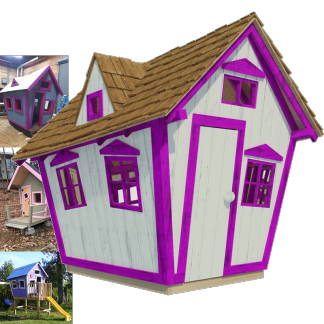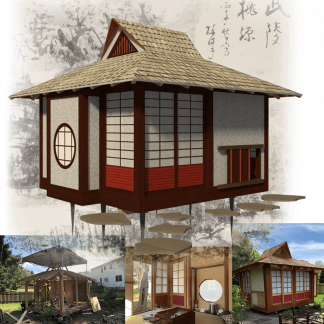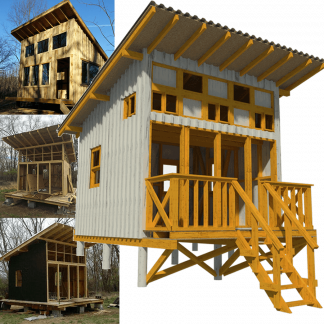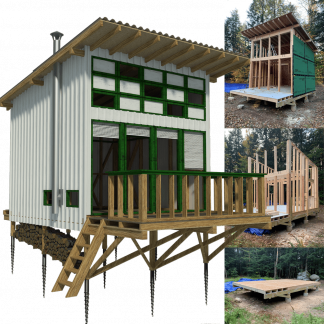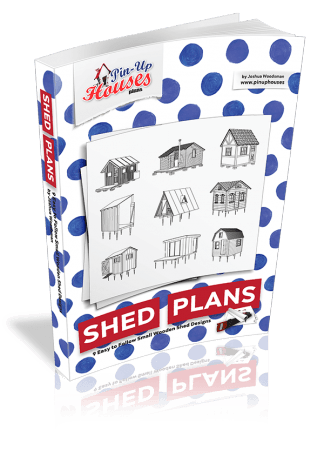With energy costs skyrocketing and environmental concerns at an all-time high, the tiny home movement offers a sustainable and cost-effective solution to the housing crisis. Off-grid living, in particular, has gained immensely in terms of its popularity as people seek to reduce their carbon footprint and live more self-sufficiently and simply. Just have a look at how many views there are for videos about off-grid cabin life on YouTube!
One of the keys to creating a comfortable off-grid home lies in smart material choices that naturally regulate temperature, reducing or even eliminating the need for powered heating and cooling systems. By using natural materials, homeowners can create spaces that are not only eco-friendly but also cozy and efficient.
Building With Thermal Mass
Rammed earth construction dates back thousands of years, yet remains one of the most effective methods for maintaining stable indoor temperatures. The thick walls of these buildings slowly absorb heat during the day, releasing it gradually as temperatures drop at night. Modern rammed earth homes combine this ancient wisdom with contemporary engineering, creating structures that stay cool in summer and warm in winter with minimal energy input.
Tip: Paint rammed earth walls in dark colors where you want more heat absorption, and lighter colors where you want reflection. This simple trick can create microclimate zones within your home.
Hempcrete: The Carbon-Negative Solution
As a building material, hempcrete offers remarkable temperature-regulating properties. This mixture of hemp hurds and lime creates walls that breathe, controlling humidity and heat transfer. Unlike conventional materials, hempcrete continues to harden and sequester carbon throughout its lifetime, making it an increasingly popular choice for sustainable builders.
Tip: Use hempcrete blocks for internal partition walls. They’re lighter than solid hempcrete walls but still provide excellent sound insulation and temperature regulation between rooms.
Cork’s Natural Insulation
Cork’s honeycomb structure makes it nature’s own insulation board. When used for flooring or wall cladding, cork maintains stable temperatures while providing acoustic benefits. Its cellular makeup contains millions of air-filled pockets, creating an effective thermal barrier that’s also renewable and biodegradable.
Tip: Install cork panels behind radiators or heat sources. The cork will help distribute heat more evenly throughout the room while preventing heat loss through the wall.
Natural Flooring
Traditional building materials often outperform their modern counterparts when it comes to temperature control. Wool carpets, for instance, are a prime example of nature’s ingenuity. Wool has an innate ability to regulate temperature and humidity, explains Ben Herbert, a director at Designer Carpet, a store selling high-end natural flooring. “Wool can absorb up to 30% of its weight in moisture without feeling damp, helping maintain consistent room temperature while improving air quality. For our off-grid customers, this natural temperature regulation makes wool carpeting an invaluable investment.”
Tip: Layer wool rugs in areas where temperature control is most needed. The air pocket between two layers of wool creates extra insulation, and you can easily roll up one layer during warmer months.
Living Roofs and Natural Cooling
Green roofs transform unused roof space into a natural cooling system. The combination of soil mass and living plants provides excellent insulation while managing rainwater runoff. During summer months, plant transpiration creates a cooling effect, while the added soil layer provides winter warmth. These systems can reduce heating and cooling needs significantly while extending roof life and creating wildlife habitats.
Tip: Plant deciduous vines on south-facing walls and overhangs. They’ll provide shade in summer but allow sunlight through in winter when they lose their leaves.
Strategic Use of Glass and Light
Strategic use of glass and light can transform your tiny home into a natural heating and cooling system. South-facing windows (in the Northern hemisphere) allow winter sun to warm interior thermal mass materials, such as stone or concrete floors, which then radiate heat throughout the evening. Proper overhangs or deciduous trees can provide shade during the summer months, preventing overheating. This passive solar design, when combined with natural materials like wool carpets and rammed earth walls, can maintain comfortable temperatures year-round without relying on mechanical systems.
Tip: Install thermal blinds with reflective backing. Close them during summer days to reflect heat and winter nights to reflect warmth back into the room. Additionally, consider using low-emissivity (low-E) glass for windows to maximize energy efficiency.



